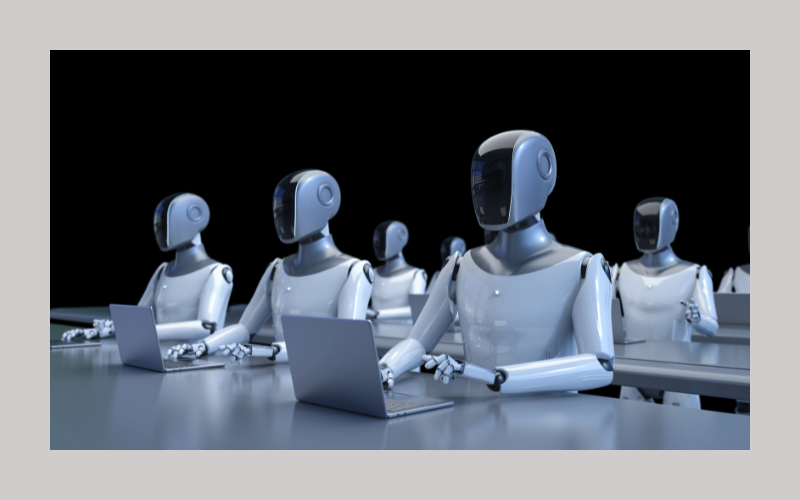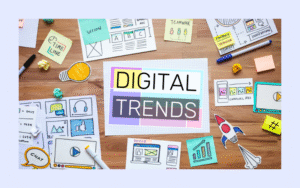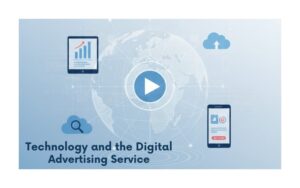The Evolution of Content in the AI Era
With the increasing adoption of the AI age, the process of content development has become immensely different as an intuitive and time-consuming process with the use of artificial intelligence, and the practice has become a strategic data-driven endeavor. By 2025, the idea of content optimization has to do not only with keywords and grammar but with the possibility to offer hyper-personalized, multi-platform experiences, which engage the user and fit the constantly evolving mechanisms of algorithms. The appearance of AI has changed the definition of how to create quality content. Such tools as ChatGPT, Jasper, Surfer SEO, and MarketMuse are now not only imperative to the writing process, but to planning, structural, distributing, and analyzing content performance.
AI is no novice or a helpmate; it has evolved as a core component of the content lifecycle. Businesses, content creators, and marketers who understand how to successfully include AI tools in their operations can enjoy great benefits through improved visibility, engagement, and ROI. Nonetheless, the strength of AI should not be reduced to automation but to the efforts to intelligently optimise it according to audience requirements, traits of platforms, and the tendency of search engines.
Using AI for Smarter Content Planning
A major use of AI that is most effective in content optimization is during the research and planning phase. Rather than relying on guesswork or suboptimal keyword lists, AI can be used to scrutinize billions of data points in blogs, forums, SERP, and social platforms to determine trending topics, content gaps, and signals of user intent in 2025. They are now able to differentiate between casual curiosity and keen involvement, and artists can refine their work to lines of interest that interest the readers and viewers the most.
AI is also beneficial, as it allows defining the semantic associations between terms, and it becomes straightforward to create content hubs, topic clusters, and pillar pages. Knowing the context of a search, the AI tools can advise on the form of the content, its length, tone, and even the frequency of publishing. This means that you will be guided by actual time data and predictive analytics, rather than last year’s performance and guts.
AI-Driven Content Structuring and Writing
After choosing the topic, AI comes in to assist with the architecture of the content. The current content optimization systems can produce outlines, which are search engine-friendly, have a good structure, and match the expectations of the audience. Such outlines tend to resemble those of the best-performing content structures but do not copy them by using unique angles or subtopics. Content creators can utilize paragraphs generated with the help of AI as the base and modify them to fit the brand voice and target persona.
In 2025, it became highly adaptive to AI writing tools as well. They are now able to change their tone, pacing, and style relative to the norms of a platform, e.g., write to a technical blog, an informal caption on TikTok, or a newsletter. Instead of developing generic copy, the current AI engines assist in the development of nuanced material, which is authentic and sounds particular. Such cooperation between humans and artificial intelligence makes the production faster and keeps it creative and emotionally appealing.
The New Standard for SEO Optimization
Seo has remained an imperative element of content strategy; however, with AI, the way SEO is pursued has transformed drastically. The current AI applications are much more than just keyword recommendations, providing semantic analysis, internal linking plan, and SERP forecasting modeling. AI systems can predict the success of your content in terms of ranking it in consideration of the prevailing algorithm action, as well as rivals doing so. They also look at searcher intent and change your keyword strategy on the fly to incorporate the changes in user behavior.
Personalization Powered by Machine Learning
The key trend in content optimization has become personalization, and AI is the driving force of such a process. By 2025, websites, email, and content platforms will actively respond to how people act, where they are, what they have done in the past, and even how they feel. With AI-driven engines, it becomes possible to personalize landing page headlines, suggest applicable blog posts, or even dynamically rewrite paragraphs on the fly, and tailor them to the preferences of the particular user.
Such personalization systems are built on machine learning models that refine themselves regularly through data on interaction. The outcome is the content that appears to have been tailor-made to the individual visitor, enhancing the time on page, click-throughs, and general satisfaction. Another application of personalization using AI is in areas of retargeting, email segmentation, and chatbot scripts, which provide a fluid intervention continuity of content to each type of audience.

Continuous Optimization with AI Analytics
There is no end to content optimization as soon as one publishes it. Some of the most important AI tools work after your launch and give you real-time information so you can see how your content is going and the nature of how it can be improved. Modern analytics tools are moving beyond pageviews to determine both scroll depth, interaction with CTA buttons, bounce rates, and can even show how users feel about specific content in various formats. Based on this information, AI will provide optimization recommendations, such as rewriting weaker parts of the content, changing the statistics, or even relocating the keywords.
Adapting Content for Voice and Conversational AI
Voice interfaces, augmented with voice assistants and conversational search, are going mainstream, so it is important to optimize content with a spoken interface in mind. By 2025, people can connect with their brands with the help of smart speakers, voice-activated applications, and AI-driven agents that read and out loud content. The AI writing tools now appraise your writing readiness to be spoken and will auto-correct your word choice, wordiness, and the tone of your voice.
As well, voice search is dependent on structured data. By automatically creating and verifying markup schema, AI platforms assist in making FAQ, how-to guides, and product pages appear anywhere in voice results. This optimization is no longer an option among brands that want to merge with AI search or messengers (such as ChatGPT).
Optimizing Social Media Content with AI
Text has ceased to be the only process that can be optimized with the help of AI. In 2025, AI will also come into use to work with video and image content. AI handles the aspects of video summarization, automatic captioning, thumbnail creation, and transcript optimization. Such boosts advance accessibility and SEO and increase the process of repurposing content on platforms such as YouTube, TikTok, Instagram, and LinkedIn.
With images, AI detects features of the picture and user behavior and suggests either adjustment of these aspects or, instead, methods to enhance interaction. Auto tagging, compressing, and format conversions of images occur. Concisely, AI has made multimedia optimization more intelligent, faster, and goal-oriented in terms of performance.
The content of the social media is supported by swiftness and timeliness. Artificial intelligence has facilitated AI tools that track the trending hashtags and counter strategies deployed by competitors and advise platform suggestions on copy, image, and time. The tools aid in scheduling posts, A/B captions testing, and automatically changing publishing strategies according to the engagement data.
It is also good to note that AI copywriting assistants adjust the tone and style to each platform. Such a sneezing image, for instance, may be published as a tweet with the help of humor and conciseness, whereas on LinkedIn, a posting with really good authority and narration would be preferred. This content tone manipulation is done instantly, such that brands are able to maintain consistency across them without compromising on their authenticity and engagement.
Email Marketing Optimization through AI
Email is considered one of the highest ROI channels, and AI has the capacity to change the way marketers treat it. AI tools insert subject lines that will likely receive high open rates, manage body copy to optimize clicking through, and group people by their behaviour, not their demographics. The dynamic content blocks ensure that the emails are altered according to the profile of the recipient or the past interactions.
These also maximize sending times and frequencies. AI examines the behavior and inbox activity of each recipient to find out the best time they will interact. This lowers the rate at which people unsubscribe from messages and makes its campaigns more fruitful without sending messages that people do not require.
The Future of Content Optimization
Not only has the content creation been enhanced because of the use of AI tools, but the content performance is also essentially transformed in the digital realm. By 2025, content optimization will no longer be a reactive step that can be carried out after publishing. It is an ongoing dynamic process that is aided by intelligent systems that learn and evolve in real time.
Businesses that are quick to adopt AI tools are bound to be in a better position following visibility, audience, and marketing performance. Still, human control will be needed in the end; in terms of creativity, compassion, and planning, they are the keys that cannot be replaced. Nothing will happen to anyone who combines human wisdom and machine intelligence and produces content that is not only ranked high but also truly feels.














